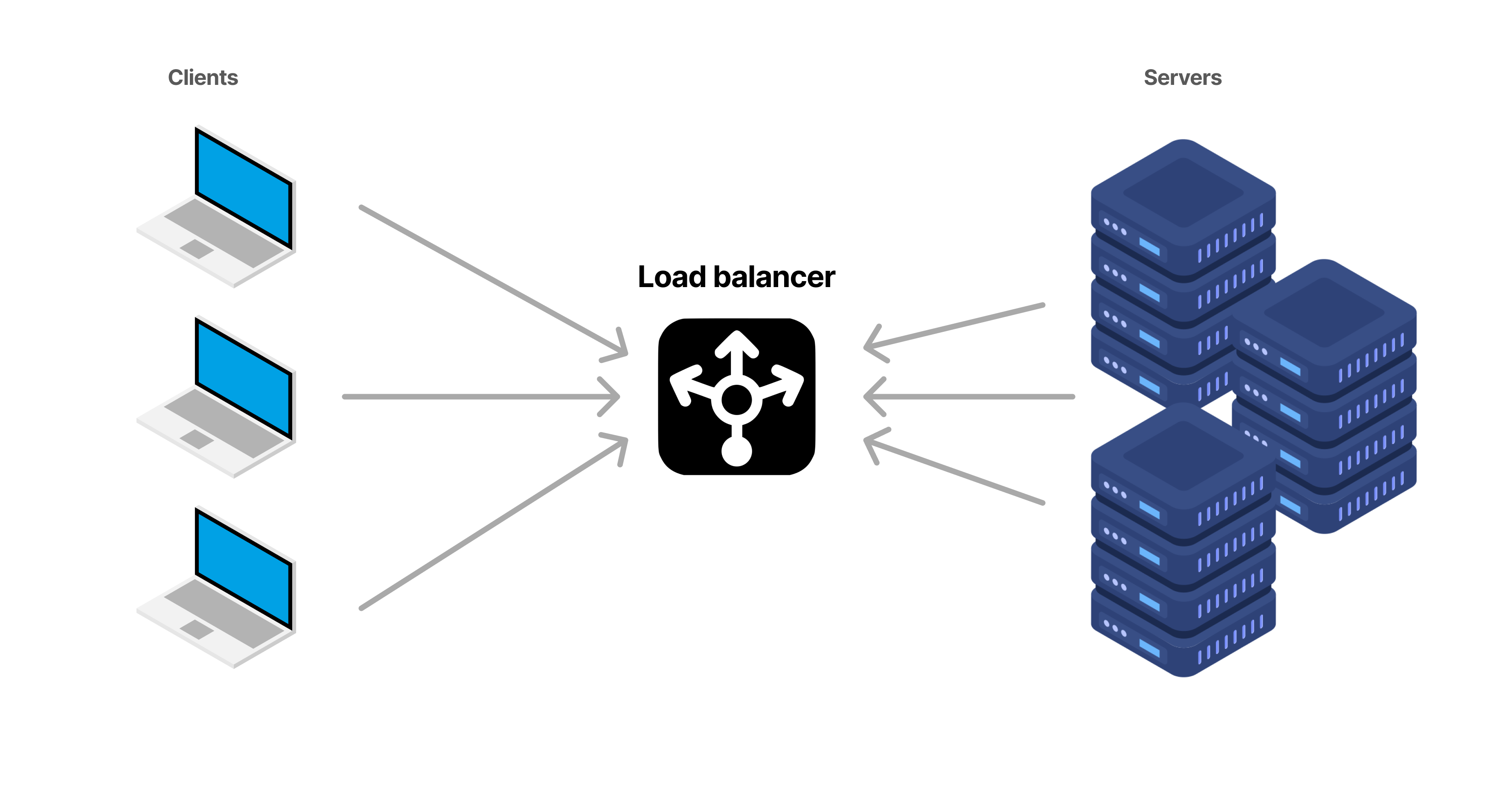What is a Server Load Balancer and How Does Load Balancing Work?

As the internet has grown in size and users, millions of people are visiting various websites on a daily basis. Thus, we must use scalable and efficient technologies to keep up with the current traffic.
In this tutorial, we are going to explain load balancers. Load balancers are an industry-changing technology that has enabled websites to serve millions of users around the world in the blink of an eye.
What is load a balancer?
Load balancing is a method of distributing traffic among multiple servers also known as a server pool. Load balancing is the technology behind websites that have huge traffic. Load balancing enables web applications to distribute their load among different servers in order not to deplete one server out of resources while leaving others unused.
You could think of load balancers as a coordinator for your application between your servers and your users, allowing complete control of incoming application traffic.
See also cloud server hosting

Why use load balancing?
Imagine your website was running on just a single server. For a long time, you would not face any difficulties. But after some time your website’s traffic increases and overloads your servers.
What do you do now?
You buy a new server. Yes, but how would the internet know which server to redirect the users to?
We need to use load balancing. Load balancers sit between the clients and servers, which are responsible for directing users to a server on a server pool.
If you have huge traffic on your website and need to connect two or more servers then cluster hosting and load balancing is the right solution for you.
One might ask, why couldn’t we just use a bigger server?
That is a really good question, but it is not applicable in reality. You see making a server bigger, wouldn’t just make maintaining it harder but at some point in time our traffic would get low and the extra resources would be wasted. On the other hand with load balancers, we could shut down some of our servers to maximize efficiency in a fast and reliable manner.
The other benefit of using load balancers is security and failure recovery. Load balancers can help your website be secure. It can defend you against DDOS attacks. Furthermore, load balancers have the capability to detect server failures and efficiently redirect users to an operational server, ensuring user satisfaction.
Load Balancing Benefits
Load balancing benefits are as follows:
- Traffic distribution
- Extra security
- Failure recovery
- Extra performance
- Faster respond time

How does load balancing work?
Whenever you request any website from the internet, it first goes to a DNS server. If you don’t have a load balancer the request then goes directly to your server. But if you have a load balancer, it intersects the request and according to the server’s health, directs the user to a server that is faster and has lower traffic.
As illustrated in the image below, load balancers intersect the connection between the clients and the servers. Load balancers then decide which client should interact with which server. Thus making the application much faster and keeping the traffic under control.

Software load balancer vs hardware load balancer
You may have questioned whether a load balancer is considered hardware or software.
Load balancers in the early days were hardware. You could still buy them and configure them with your server. But nowadays hardware load balancers are not widely used. Instead, software load balancers are used. The other type of load balancer is application load balancer. They are offered as a service by cloud providers and are mostly a pay-as-you-go model.
Hardware load balancers require you to buy hardware and set it up with your server, but software-based load balancers can be set up without much hassle.
See also our cluster hosting plans, if you are interested in hosting your application across several nodes.
Load balancers don’t necessarily need to be near the server. You could also use global server load-balancing solutions as well. These load balancers are across the world and direct the traffic among your server on multiple data centers.
You could also use DNS load balancing that will direct your users from the DNS server to a server on your server pool.
The followings are considered some of the different types of load balancers:
- Software load balancers
- Hardware load balancer
- Application load balancers
- Elastic load balancing
- Cloud load balancing
- Virtual load balancers
- Network load balancers
Load Balancing Algorithms
Load balancers distribute traffic according to their algorithm. Load balancing algorithms are divided into two main categories and those are as follows:
- Static load balancing algorithms: Static load balancing algorithms do not have information about the current status of a server. It distributes traffic evenly between servers without considering their load or health. Static load balancing simply keeps track of the user session on each server and knows just the amount of users per server. Some of the most popular static load-balancing algorithms are:
- Round robin method
- Weighted round-robin method
- IP hash method
- Dynamic load balancing algorithms: Dynamic load balancing algorithms on the other hand have various information regarding the server. It knows the server’s current health, performance, and other metrics. Dynamic load balancing then examines the server with these pieces of information and then distributes the traffic accordingly. Some of the most popular dynamic load-balancing algorithms are:
- Least connection method
- Weighted least connection method
- Least response time method
- Resource-based method
Conclusion
Load balancers have indeed changed the way applications work. You could think of load balancers as a coordinator that redirects each request to a suitable server on the server pool.
Load balancers can be either hardware or software. You could also use it as a service from a cloud provider and can be operated with different types of algorithms.
Next Step
Now that you have acquired some knowledge about load balancers and what they are used for, you are now able to work with them and set them up. We also recommend taking a look at the ServerMania Knowledge Base for our latest articles and tutorial videos related to the cloud.
Was this page helpful?

